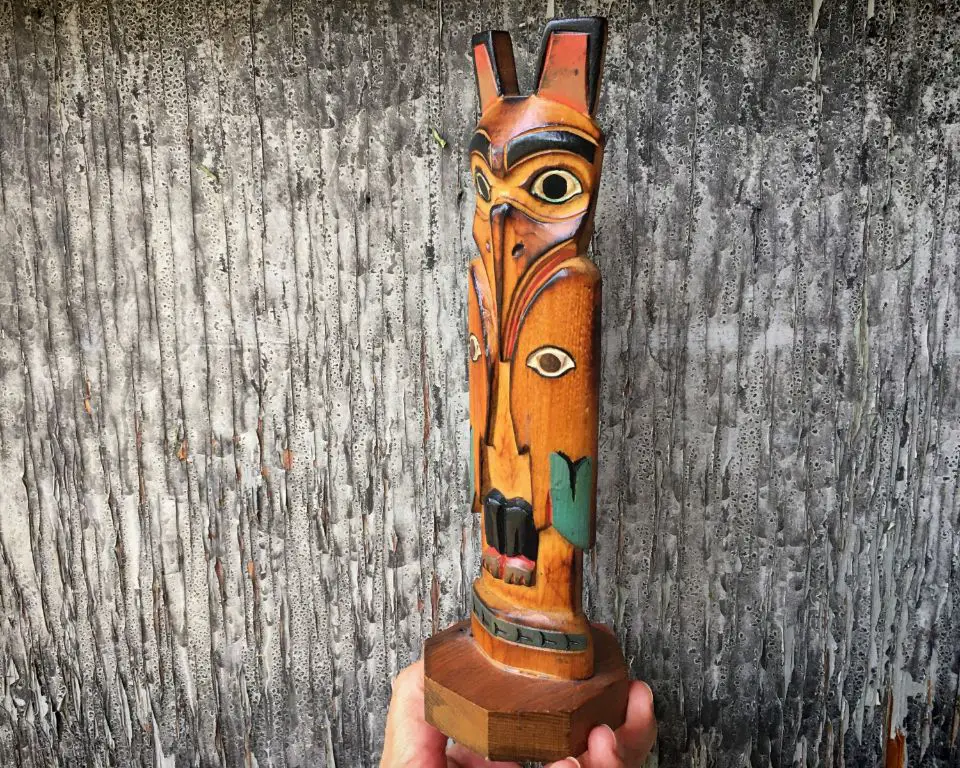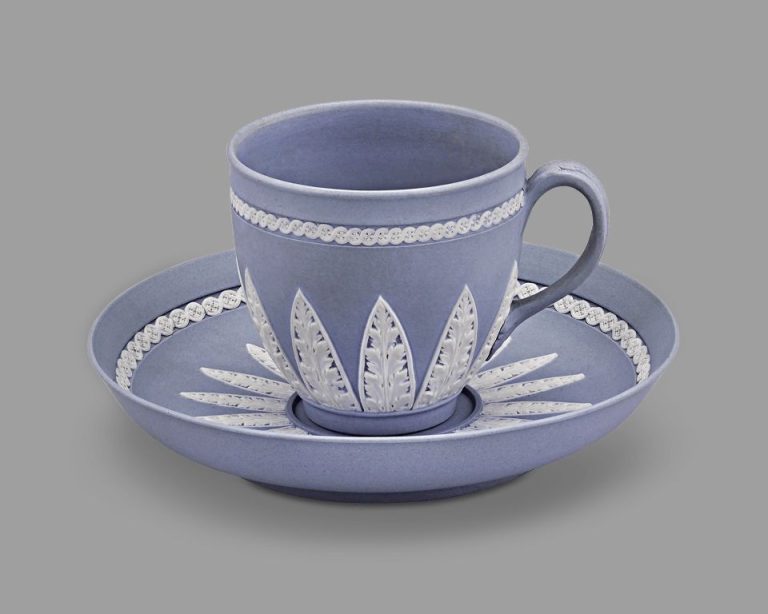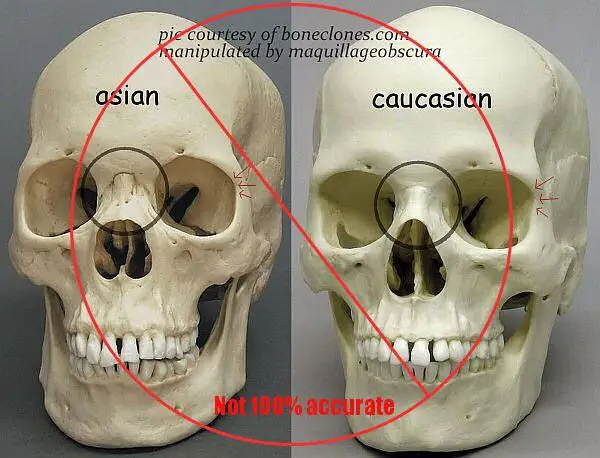What Animals Do Totem Poles Have?
Totem poles are monumental carvings made from large tree trunks, often western red cedar, by Indigenous peoples of the Pacific Northwest Coast including groups such as the Haida, Tlingit, Tsimshian, Kwakwaka’wakw, Nuxalk, and Coast Salish (The Canadian Encyclopedia). The word “totem” comes from the Ojibwe word “dodaem” which means “kinship group” and refers to an object, typically an animal, that serves as an emblem of a family or clan. Totem poles are symbolic representations commemorating ancestry, legends, events or people of importance to that clan.
The figures on the totem pole represent clan crests, which often depict animals from mythology or the natural world. Some common animal motifs include bears, eagles, killer whales, ravens, frogs, wolves, and salmon. The arrangement and symbols convey the history, lineage and cultural beliefs of the clan. The figures are stacked one above the other with the most important crest on the bottom and they are read from the bottom up. The significance and symbolism of the crests depicted varies between different Indigenous groups and specific clans.
Totem poles are deeply meaningful for the people who create them. They are carved to illustrate stories, commemorate deceased clan members, portray encounters with supernatural beings, or to convey the clan’s shared crests. The towering totem poles serve as symbolic guardians, record historical narratives, and announce the clan’s prestige and social status to neighboring tribes.
Bears
Bears are one of the most common animals depicted on totem poles, representing traits like strength, courage, and healing. According to the bear mother motif, the mother bear symbolizes nurturing, comfort, and protection of the family, while the father represents discipline and authority (gigiEarthworker). Black bears and grizzly bears hold different symbolic meaning for different tribes, but are generally seen as mighty protectors.
The Kwakwaka’wakw and other Northwest Coast tribes use the bear as a crest that represents family ancestry. Images of grizzly bears convey great power and ferocity, while black bears represent introspection. Bears hibernate in the winter, so they also signify renewal and transformation as they reemerge in spring (gigiEarthworker).
In Tlingit culture, there is a widespread legend of the bear mother who transformed into human form to raise an abandoned child. This represents the bear’s nurturing maternal instincts. The bear’s healing powers are also emphasized, as the Kermode bear’s spirit is called upon by shamans during rituals.
Eagles
Eagles are one of the most common symbols depicted on totem poles, representing vision, spiritual connection, and leadership. In Northwest Coast mythology, the thunderbird is considered the ruler of the upper world. Carvings of thunderbirds on totem poles are thought to offer protection and ward off evil spirits. The bald eagle and golden eagle are two species frequently carved on poles.
The bald eagle is seen as a symbol of spiritual strength and insight. Its ability to soar high in the sky while maintaining sharp vision represents an ability to connect the spiritual and physical worlds. Eagles are revered for their strength, regal presence, and astute observational skills. As apex predators, they represent leadership qualities and protective energy.
Thunderbirds depicted in totem poles often have outstretched wings and grasping talons to show their power over the stormy skies. The thunderbird’s connection to thunder and lightning evokes its mythological status as a supernatural being. Carvings of the thunderbird provide a symbolic and spiritual link between the human, natural, and spirit worlds.
The prominence of eagles in totem pole carvings shows their cultural significance. They epitomize the native values of clear sightedness, bravery, wisdom, and an ability to traverse between realms. As guardians watching over from above, eagles link the earthly and spiritual in a profound, meaningful way.
Source: https://www.native-art-gallery.com/thunderbird.html
Wolves
Wolves hold deep symbolic meaning in many Indigenous cultures and are one of the most common animals depicted on totem poles. Wolves represent loyalty, communication, teamwork, and family values.
In the wild, wolves live in tightly knit packs that function much like human families. Packs typically consist of a breeding pair (the alpha male and female) and their offspring from previous years. All members cooperate to hunt, raise pups, and protect their territory. Their survival depends on banding together and having complex communication abilities.
The most common wolf in North America is the grey wolf, but other species like the red wolf are also culturally significant. Wolves were seen as teachers on how to live in harmony and organized societies. Their presence on totem poles honors the wolf’s spiritual attributes.
Some Northwest Coast clans such as the Tlingit have a Wolf moiety – meaning Wolf serves as their primary crest. Fellow clan members would be considered “brothers” and “sisters” of the wolf. Images of wolves on poles represent these important kinship ties.
Sources:
http://www.ottawahigh.com/?plugin=RWD&Templates=RWD&object=http://%D1%89%D1%80%D0%B5%D1%91%D0%B2%D1%89.%D1%80%D1%84/mpsk11fe43
Owls
Owls are a common animal depicted on totem poles, symbolizing wisdom, stealth, and secrecy. In many Native American cultures, owls represented intelligence and the ability to see and know things that others could not (cite url). Their exceptional night vision and silent flight contributed to their mystique as creatures of magic and omens.

The most common owls seen on totem poles are the snowy owl and the great horned owl. The snowy owl was considered a guide from the spirit world by the Inuit people. The great horned owl was known for its ‘wisdom’ tufts of feathers and large staring eyes. Other owls like the barred owl and screech owl also made occasional appearances on poles (cite url).
Artist Bill Reid sculpted a famous owl totem pole in Stanley Park, Vancouver. His Tu-Sont or Two Brothers pole depicts two giant owls back-to-back, representing knowledge and protection. Reid’s masterful craftsmanship made the owls seem alive and silently observant, true to their nature.
Salmon
Salmon hold deep symbolic meaning in Northwest Native American cultures, representing determination, rebirth, and nourishment. Salmon symbolize the determination to achieve goals and to never give up, persisting against all odds as they migrate from freshwater rivers to the ocean and back again to spawn. This arduous journey upstream against strong currents demonstrates the salmon’s resolve and tireless effort in accomplishing their life’s purpose.
The salmon life cycle also represents themes of renewal, rebirth, and new beginnings. Salmon are born in freshwater streams and rivers, migrate downstream to the ocean where they live out most of their adult lives, and then return back upstream to the exact place of their birth to spawn and die. The salmon’s return and spawning gives rise to the next generation, continuing the cycle of life. This cycle mirrors themes of death and rebirth in nature.
In addition to their symbolic meanings, salmon were a vital source of nourishment for many Northwest Native peoples. Tribes including the Tlingit and Haida relied on salmon as a staple food source and harvested them seasonally as the salmon made their migration. Salmon were smoked, dried, and stored to provide sustenance throughout the winter months. The annual return of spawning salmon represented the renewal of food supplies for the coming year. Salmon fishing holds cultural and spiritual significance for tribes who actively maintain these traditions today.
Whales
Whales are one of the most majestic animals featured on totem poles, representing community, intelligence, and travel. Cetaceans like orcas, humpbacks, and gray whales are commonly depicted. These massive marine mammals live in tightly knit social groups called pods.
Orca pods demonstrate complex social behaviors, working cooperatively to hunt, migrate, and raise calves. Family units stay together for life. Each pod has its own set of calls and dialects used to communicate. Their large brain-to-body ratio hints at advanced intelligence.
Humpback whales are known for their seasonal migration spanning thousands of miles. Their annual travels take them from frigid polar waters to tropical breeding grounds. During this epic journey, multiple separate pods converge to mate, socialize, and birth new calves before heading back.
The highly structured social life of whales represents community values important to many Native cultures. Whales also symbolize wisdom gathered from far-reaching travels and adventures.
Totem poles highlight whales as noble, venerated animals due to their tight social bonds, curiosity, and far-ranging migrations. The presence of a whale on a totem pole is a reminder to nurture community and keep exploring life’s great unknowns.
Other Animals
In addition to the more common animals like bears, eagles, and wolves, some less common creatures can also be found on totem poles, including ravens, frogs, deer, and moose.
The raven is considered a creator, trickster, and transformer in many Northwest Coast tribes. Ravens symbolize intelligence, mischief, and magic 1. Frogs represent cleansing, healing, and transformation as they transition between water and land. Some tribes like the Tsimshian use frog crests on totem poles.
The deer appears on totem poles of tribes like the Tlingit and Haida, representing gentleness, sensitivity, and intuition. Moose signify self-esteem and assurance as they are one of the largest land mammals in North America. The Tlingit and other tribes display the moose as a symbol of wisdom and longevity 2.
These less common animals are found on totem poles in their traditional tribal areas, like ravens and frogs in the Pacific Northwest and moose in Alaska.
Modern Adaptations
Contemporary artists are finding new ways to adapt the traditional art form of totem poles to modern times. While still incorporating animal motifs, modern totem poles blend traditional and contemporary symbolism. Abstract animal designs are becoming more common as artists move away from literal representations.
Some modern artists like James Hart use traditional Native American forms but carve untraditional objects like coffeepots and bicycles into the poles. Others use the same traditional animals but portray them in less literal ways, with more exaggerated or abstracted features. These modern adaptations allow the art form to evolve while still honoring its roots.
Modern poles often incorporate metal or paint, unlike the traditional woodcarvings. Some artists create conceptual pieces that represent ideas more than physical animals. The works reflect modern archaeology concepts and issues around cultural identity.
While traditional native carvings were part of spiritual practices and oral histories, modern adaptations allow more room for artistic interpretation and expression. The blending of old and new in contemporary totem poles keeps the art form relevant for 21st century artists and audiences.
Conclusion
Totem poles are a significant cultural tradition for many Native American tribes in the Pacific Northwest. The carved animals on the poles represent important qualities, stories, and meanings unique to each tribe.
Some of the key animal totem roles and meanings include:
- Bears symbolize strength, family bonds and protection
- Eagles represent courage, wisdom and connection to the Creator
- Wolves signify loyalty, intelligence and teamwork
- Owls indicate watchfulness, visionary power and transition
- Salmon represent determination, nourishment and provision
- Whales depict ancient wisdom, good fortune and safe travels
Totem poles continue to be an vital part of tribal heritage today. Their symbolic legacy preserves the history, values and oral traditions passed down through generations. Many Native artists uphold their ancestors’ practices by carving new totem poles that reflect both traditional and contemporary designs.
The preservation of totem pole art ensures these meaningful traditions remain a cherished part of Native culture. Their continued relevance highlights the resilience and pride of indigenous communities across the Pacific Northwest.





